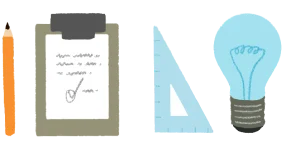Sign up for our UX Blog
Don't miss the latest! We'll notify you of each new post.

Controlled Vocabulary is a carefully selected, organized, and managed set of terms used consistently across a system, website, or application to describe content and facilitate information retrieval. It's a curated list of preferred terms where each concept is represented by a single, authorized term, eliminating variations, synonyms, and ambiguities that might otherwise cause confusion or inconsistency.
Controlled vocabularies can range from simple lists of preferred terms to more complex structures like taxonomies (hierarchical relationships), thesauri (synonyms and related terms), or ontologies (complex semantic relationships). They provide a standardized language for categorizing, tagging, and searching for content, ensuring that both content creators and users are "speaking the same language" when organizing and finding information.
Controlled Vocabulary is important because it improves findability and discoverability of content by ensuring consistent terminology across a system. When the same concepts are always described using the same terms, users can more reliably find what they're looking for, and search functionality becomes more effective. It reduces confusion caused by synonyms, homonyms, and variations in terminology.
For content creators and managers, controlled vocabularies provide clear guidelines for categorizing and tagging content, leading to more consistent organization. They also support better content relationships, facilitate translation and localization, and enable more powerful filtering and faceted navigation. In large systems with multiple contributors, controlled vocabularies are essential for maintaining coherence and preventing terminology drift over time.
To develop an effective controlled vocabulary, start by conducting user research to understand how your audience thinks about and describes concepts in your domain, analyze existing content to identify common terms and concepts, involve subject matter experts to ensure accuracy and comprehensiveness, and create a clear structure that defines relationships between terms (hierarchical, equivalent, or associative).
For implementation, document the vocabulary in a central, accessible location, establish governance processes for maintaining and updating terms, train content creators on proper usage, integrate the vocabulary into content management systems and tagging interfaces, and monitor usage to identify gaps or issues. Remember that a controlled vocabulary is a living tool that should evolve based on user needs, content changes, and domain developments—regular review and updates are essential for long-term effectiveness.